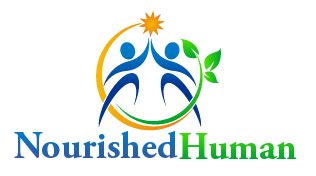What vitamin do we need in amounts up to 25 times higher than the government recommends, for us to be healthy?
What vitamin deficiency affects over half of the population, is almost never diagnosed, and has been linked to many cancers, high blood pressure, heart disease, diabetes, depression, fibromyalgia, chronic muscle pain, bone loss, and autoimmune diseases like multiple sclerosis?
What vitamin is almost totally absent from our food supply?
What vitamin is the hidden cause of so much suffering that is so easy to treat?
If you guessed vitamin D, you're right!
Here is what several doctors have to say about this crucial vitamin:
Here is what several doctors have to say about this crucial vitamin:
Because vitamin D is so cheap and so clearly reduces all-cause mortality, I can say this with great certainty: Vitamin D represents the single most cost-effective medical intervention in the United States.
- Dr. Greg Plotnikoff, Medical Director, Penny George Institute for Health and Healing, Abbott Northwestern Hospital in Minneapolis.
I believe [vitamin D] is the number one public health advance in medicine in the last twenty years.
- Dr. John Whitcomb, Aurora Sinai Medical Center.
I would challenge anyone to find an area or nutrient or any factor that has such consistent anti-cancer benefits as vitamin D. The data are really quite remarkable.
-Dr. Edward Giovannucci, Vitamin D expert.
In all my many years of practice of medicine, I've never seen one vitamin, even vitamin C, have such profound effects on human health.
15 Facts You Probably Never Knew About Vitamin D and Sunlight Exposure
- Soram Khalsa MD
15 Facts You Probably Never Knew About Vitamin D and Sunlight Exposure
Vitamin D is perhaps the single most underrated nutrient in the world of nutrition. That’s probably because it’s free; your body makes it when sunlight touches your skin. Truth is, most people don’t know the real story on vitamin D and health.
- Vitamin D is produced by your skin in response to exposure to ultraviolet radiation from natural sunlight.
- The healing rays of natural sunlight that generate vitamin D in your skin cannot penetrate glass. So you don’t generate vitamin D when sitting in your car or home.
- It is nearly impossible to get adequate amounts of vitamin D from your diet. Sunlight exposure is the only reliable way to generate vitamin D in your own body. Our bodies can produce vitamin D on their own when exposed to sunlight but the skin must be free of sunscreen, sun blocks and clothing, which all interfere with the process.
- A person would have to drink 10 tall glasses of vitamin D fortified milk each day just to get minimum levels of vitamin D into their diet.
- The farther you live from the equator, the longer the exposure you need to the sun in order to generate vitamin D. Canada, the UK and most US states are far from the equator.
- People with dark skin pigmentation may need 20 to 30 times as much exposure to sunlight as fair-skinned people to generate the same amount of vitamin D. This is why prostate cancer is epidemic among black men—it is a simple but widespread sunlight deficiency.
- Sufficient levels of vitamin D are crucial for calcium absorption in your intestines. Without sufficient vitamin D, your body cannot absorb calcium, rendering calcium supplements useless.
- Chronic vitamin D deficiency cannot be reversed overnight; it takes months of vitamin D supplementation and sunlight exposure to rebuild the body’s bones and nervous system.
- Even weak sunscreens (SPF 8) block your body’s ability to generate vitamin D by 95%. Sunscreen products can actually cause disease by creating a critical vitamin deficiency in the body.
- It is impossible to generate too much vitamin D in your body from sunlight exposure: your body will self-regulate and only generate what it needs.
- If it hurts to press firmly on your sternum, you may be suffering from chronic vitamin D deficiency right now.
- Vitamin D is activated in your body by your kidneys and liver before it can be used.
- Having kidney disease or liver damage can greatly impair your body’s ability to activate circulating vitamin D.
- Even though vitamin D is one of the most powerful healing chemicals in your body, your body makes it absolutely free. No prescription required.








